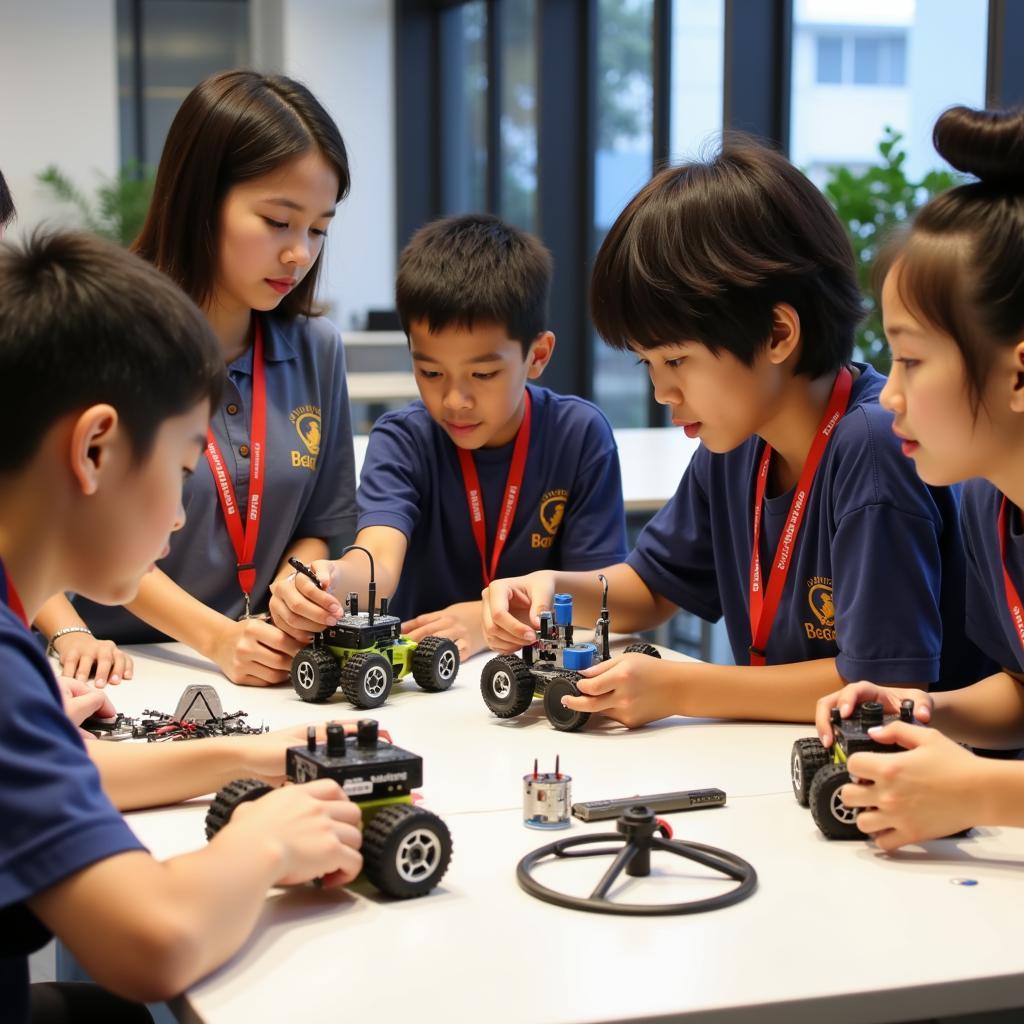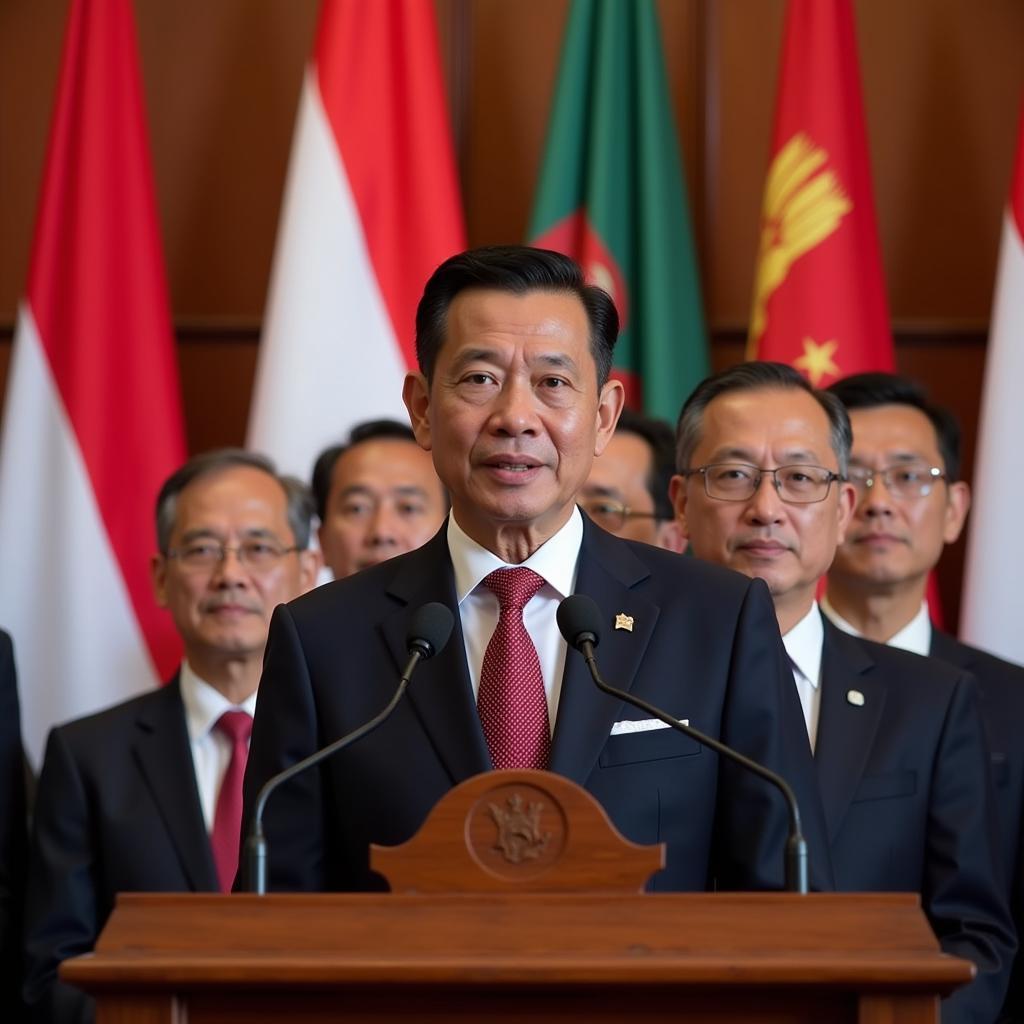Southeast Asia, a region brimming with cultural diversity and economic potential, has found strength in unity through the Association of Southeast Asian Nations (ASEAN). While ASEAN cooperation spans various sectors, the realm of science and technology (S&T) stands out as particularly transformative. But what exactly are the benefits of ASEAN cooperation in science and technology? Let’s delve into the impactful ways this collaboration shapes a brighter future for the region.
 ASEAN scientists collaborating in a lab
ASEAN scientists collaborating in a lab
Fostering Innovation and Technological Advancement
One of the most significant benefits of ASEAN cooperation in science and technology is the boost it provides to innovation. By pooling resources, sharing expertise, and conducting joint research projects, ASEAN member states can overcome individual limitations and accelerate technological progress.
For instance, the ASEAN Plan of Action on Science, Technology and Innovation (APASTI) outlines collaborative initiatives in areas like biotechnology, nanotechnology, and information and communication technology (ICT). These initiatives not only foster groundbreaking discoveries but also create a conducive environment for technological startups and SMEs to thrive, ultimately boosting the region’s competitiveness on the global stage.
Bridging the Development Gap
Within ASEAN, disparities in economic development and technological advancement are evident. However, cooperation in S&T plays a crucial role in bridging this gap. Through knowledge sharing, technology transfer, and capacity building programs, less developed member states can benefit from the expertise and resources of their more advanced counterparts.
Initiatives like the ASEAN University Network (AUN) and the ASEAN Network of Science and Technology Institutions (ANSTI) facilitate collaboration among universities and research institutions, enabling the exchange of knowledge, best practices, and academic staff. This collaborative approach empowers all ASEAN nations to participate in and benefit from technological advancements, fostering more inclusive and equitable development across the region.
 ASEAN students participate in a robotics workshop
ASEAN students participate in a robotics workshop
Addressing Shared Challenges
Southeast Asia faces numerous shared challenges, from climate change and natural disasters to food security and public health threats. ASEAN cooperation in science and technology provides a platform for member states to collectively address these issues through collaborative research, technological solutions, and information sharing.
The ASEAN Center for Biodiversity, for instance, plays a vital role in conserving the region’s rich biodiversity and mitigating the impacts of climate change. Similarly, the ASEAN Plus Three Field Epidemiology Training Network (APT FETN) strengthens regional capacity to respond to emerging infectious diseases. By working together, ASEAN countries can leverage their collective knowledge and resources to overcome shared challenges and build a more resilient and sustainable future.
Enhancing Competitiveness in the Global Market
In an increasingly interconnected world, technological prowess is paramount to economic competitiveness. ASEAN cooperation in science and technology empowers the region to compete more effectively in the global market. By fostering innovation, promoting research and development (R&D), and nurturing a skilled workforce, ASEAN countries can enhance their technological capabilities and move up the value chain.
Collaboration in areas like digital trade, e-commerce, and the digital economy, as outlined in the ASEAN Digital Masterplan 2025, are crucial for the region to harness the power of technology for economic growth and integration into the global digital landscape.
Strengthening Regional Integration
Beyond the tangible benefits, ASEAN cooperation in science and technology fosters a sense of community and shared purpose among member states. By working together on projects of common interest, researchers, scientists, and policymakers from different backgrounds and nationalities forge strong bonds of collaboration and understanding.
This people-to-people connectivity, facilitated by joint research programs, exchange visits, and scientific conferences, strengthens regional integration and contributes to a more cohesive and harmonious ASEAN community.
FAQs about ASEAN Cooperation in S&T
1. What are some key initiatives under the ASEAN Plan of Action on Science, Technology and Innovation (APASTI)?
APASTI outlines several initiatives, including promoting research collaboration in biotechnology, nanotechnology, and ICT; fostering technology transfer and commercialization; and developing a skilled workforce in emerging technologies.
2. How does ASEAN cooperation in S&T benefit businesses in the region?
Collaboration in S&T creates opportunities for businesses by fostering innovation, promoting technology transfer, and developing a skilled workforce. It also opens doors to new markets within the ASEAN region.
3. What is the role of universities in ASEAN S&T cooperation?
Universities play a pivotal role in research collaboration, knowledge sharing, and capacity building. Networks like the ASEAN University Network (AUN) facilitate these collaborations.
 ASEAN Technology Summit
ASEAN Technology Summit
4. How does ASEAN address the issue of brain drain in the field of S&T?
ASEAN initiatives aim to retain skilled professionals by providing more opportunities within the region. This includes promoting research funding, supporting startups, and creating attractive career paths in S&T fields.
5. What are some future prospects for ASEAN cooperation in S&T?
Future prospects include deeper collaboration in artificial intelligence, big data analytics, cybersecurity, and renewable energy to address emerging global challenges and opportunities.
Need Assistance?
Have questions or need further information on ASEAN or other topics? Contact us:
- Phone: +84369020373
- Email: [email protected]
- Address: Thon Ngoc Lien, Hiep Hoa, Bac Giang, Vietnam
Our dedicated customer support team is available 24/7 to assist you.


